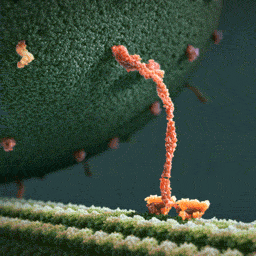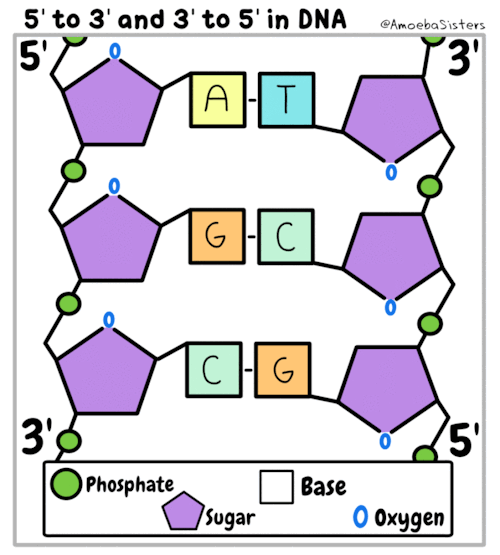Team Chloroplast Or Team Mitochondrion?

Team Chloroplast or Team Mitochondrion?
Poster of this available here!
More Posts from Bio100cia-blog and Others

The downside to making your own food…you’re probably going to get eaten by a heterotroph.

ProtoPhotosynthesis™

Scientists have created a mutant enzyme that breaks down plastic drinks bottles – by accident. The breakthrough could help solve the global plastic pollution crisis by enabling for the first time the full recycling of bottles.
The new research was spurred by the discovery in 2016 of the first bacterium that had naturally evolved to eat plastic, at a waste dump in Japan. Scientists have now revealed the detailed structure of the crucial enzyme produced by the bug.
The international team then tweaked the enzyme to see how it had evolved, but tests showed they had inadvertently made the molecule even better at breaking down the PET (polyethylene terephthalate) plastic used for soft drink bottles. “What actually turned out was we improved the enzyme, which was a bit of a shock,” said Prof John McGeehan, at the University of Portsmouth, UK, who led the research. “It’s great and a real finding.”
Continue Reading.

A bacterium living on the diatom of and amphipod
(Reddit)
Zoooooooooooom


Kinesin (a motor protein) pulling some kind of vesicle along some kind of cytoskeletal filament.

Terrifying. 🎃

¿Recuerdas cuando sólo sabías que esto era una célula, y pensabas que eso era todo lo que tenía?
Era casi tierna cuando tenía sólo unos organelos con funciones que se resumían en unas pocas líneas, y la mitocondria era lo más complejo y abundante que podía existir porque la materia que te pasaban de ella ocupaba dos páginas del cuaderno…
Y qué importaba cómo se relaciona? Para eso tenía unas lindas proteínas en la membrana que comunicaban y hacían magia…
…
Todo ese simple concepto queda atrás cuando tienes biología celular…
Simple concepto escolar de célula, ¡te extraño!
Noche de estudio de Biología Celular, ¡voy por ti!

Confused about what is meant by 5’ to 3’ and 3’ to 5’ in DNA? We have a GIF for that!
Penicillin

Penicillin is a widely used antibiotic prescribed to treat staphylococci and streptococci bacterial infections.
beta-lactam family
Gram-positive bacteria = thick cell walls containing high levels of peptidoglycan
gram-negative bacteria = thinner cell walls with low levels of peptidoglycan and surrounded by a lipopolysaccharide (LPS) layer that prevents antibiotic entry
penicillin is most effective against gram-positive bacteria where DD-transpeptidase activity is highest.
Examples of penicillins include:
amoxicillin
ampicillin
bacampicillin
oxacillin
penicillin
Mechanism(s)
Penicillin inhibits the bacterial enzyme transpeptidase, responsible for catalysing the final peptidoglycan crosslinking stage of bacterial cell wall synthesis.
Cells wall is weakened and cells swell as water enters and then burst (lysis)
Becomes permanently covalently bonded to the enzymes’s active site (irreversible)


Alternative theory: penicillin mimics D-Ala D-Ala

Or may act as an umbrella inhibitor

Resistance
production of beta-lactamase - destroys the beta-lactam ring of penicillin and makes it ineffective (eg Staphylococcus aureus - most are now resistant)
In response, synthetic penicillin that is resistant to beta-lactamase is in use including egdicloxacillin, oxacillin, nafcillin, and methicillin.
Some is resistant to methicillin - methicillin-resistant Staphylococcus aureus (MRSA).
Demonstrating blanket resistance to all beta-lactam antibiotics -extremely serious health risk.
-
 riasanotra liked this · 1 year ago
riasanotra liked this · 1 year ago -
 solcxxd liked this · 4 years ago
solcxxd liked this · 4 years ago -
 einyscloset liked this · 4 years ago
einyscloset liked this · 4 years ago -
 pmcsyrcmenmmh liked this · 4 years ago
pmcsyrcmenmmh liked this · 4 years ago -
 sxndrxsuniverse liked this · 4 years ago
sxndrxsuniverse liked this · 4 years ago -
 toastedlychee liked this · 4 years ago
toastedlychee liked this · 4 years ago -
 leonard-cohen-the-second reblogged this · 4 years ago
leonard-cohen-the-second reblogged this · 4 years ago -
 leonard-cohen-the-second liked this · 4 years ago
leonard-cohen-the-second liked this · 4 years ago -
 cyberpeanutpeachsworld liked this · 4 years ago
cyberpeanutpeachsworld liked this · 4 years ago -
 psionic--drain liked this · 4 years ago
psionic--drain liked this · 4 years ago -
 covenawhite66 liked this · 5 years ago
covenawhite66 liked this · 5 years ago -
 navy--gravy liked this · 5 years ago
navy--gravy liked this · 5 years ago -
 brightb-itch liked this · 6 years ago
brightb-itch liked this · 6 years ago -
 skehmet liked this · 6 years ago
skehmet liked this · 6 years ago -
 gingeredfreckles liked this · 6 years ago
gingeredfreckles liked this · 6 years ago -
 bio100cia-blog reblogged this · 6 years ago
bio100cia-blog reblogged this · 6 years ago -
 existential-crisis-territory liked this · 6 years ago
existential-crisis-territory liked this · 6 years ago -
 karen-reinahonguito liked this · 6 years ago
karen-reinahonguito liked this · 6 years ago -
 mielepeche liked this · 6 years ago
mielepeche liked this · 6 years ago -
 probichboy liked this · 6 years ago
probichboy liked this · 6 years ago -
 hahayousuckhahaha liked this · 6 years ago
hahayousuckhahaha liked this · 6 years ago -
 bendaradrylcocosquat liked this · 6 years ago
bendaradrylcocosquat liked this · 6 years ago -
 just-another-blog-07 liked this · 6 years ago
just-another-blog-07 liked this · 6 years ago -
 architectsus liked this · 6 years ago
architectsus liked this · 6 years ago -
 hell-or-high-waters liked this · 6 years ago
hell-or-high-waters liked this · 6 years ago -
 zarelogy reblogged this · 6 years ago
zarelogy reblogged this · 6 years ago -
 anothertombaker-blog liked this · 6 years ago
anothertombaker-blog liked this · 6 years ago -
 educationofiskandar-blog liked this · 6 years ago
educationofiskandar-blog liked this · 6 years ago -
 midnight-pancakes liked this · 6 years ago
midnight-pancakes liked this · 6 years ago -
 fangirl11 liked this · 6 years ago
fangirl11 liked this · 6 years ago -
 navigatorbird liked this · 6 years ago
navigatorbird liked this · 6 years ago -
 thecupofstanley reblogged this · 6 years ago
thecupofstanley reblogged this · 6 years ago -
 cutiepiemimi reblogged this · 6 years ago
cutiepiemimi reblogged this · 6 years ago -
 veryhunger-blog liked this · 6 years ago
veryhunger-blog liked this · 6 years ago -
 lisardii-blog liked this · 6 years ago
lisardii-blog liked this · 6 years ago -
 saukerl1 liked this · 6 years ago
saukerl1 liked this · 6 years ago